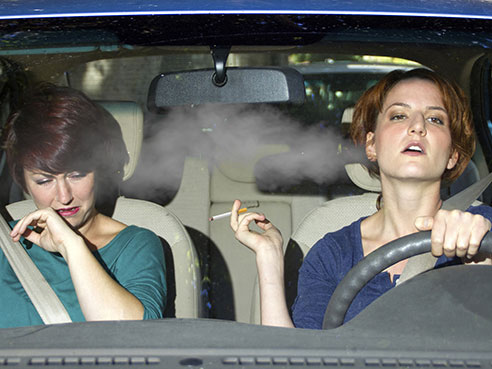 Secondhand smoke is classified as a known human carcinogen, meaning it can cause cancer. While smoking is also a risk factor for stroke, it has been unclear whether or not secondhand smoke (SHS) increases risk of stroke for nonsmokers, until now.
Secondhand smoke is classified as a known human carcinogen, meaning it can cause cancer. While smoking is also a risk factor for stroke, it has been unclear whether or not secondhand smoke (SHS) increases risk of stroke for nonsmokers, until now.
Annually in the United States, 3,000 lung cancer deaths occur among adult nonsmokers as a result of exposure to SHS, according to the National Cancer Institute. Some research also suggests that SHS may increase the risk of breast cancer, nasal sinus cavity cancer and nasopharyngeal cancer in adults, and the risk of leukemia, lymphoma and brain tumors in children.
The University of Alabama at Birmingham’s Leslie McClure, Ph.D., professor in the Department of Biostatistics, is senior author of a new paper published in the American Journal of Preventive Medicine that finds exposure to SHS also increased the risk of stroke by 30 percent, compared to those who were not exposed to SHS, among nonsmokers.
“This relationship remained even after we considered other risk factors for stroke, such as age, sex, race, body mass index and lifestyle factors,” McClure said. “Given the suggestion in the literature that there is an association between SHS exposure and other outcomes, we were not surprised by these results, although the relationship between SHS exposure and stroke has not been clearly described previously.”
This study used data from the Reasons for Geographic and Racial Differences in Stroke (REGARDS) study. Out of nearly 22,000 participants, 23 percent reported SHS in the year prior. During the nine-year study period, 428 reported experiencing a stroke. McClure says a further analysis was performed regarding the type of stroke — ischemic stroke, in which a clot blocks blood flow to an area of the brain, versus hemorrhagic stroke, in which bleeding occurs inside or around brain tissue. Most strokes were due to blockage of blood flow to the brain: 352 ischemic, 50 hemorrhagic and 26 strokes of unknown subtype.
| “REGARDS provides a large, diverse group of people whom we have characterized very well to study this. Because REGARDS follows our participants prospectively for smoke, we are able to establish exposure prior to the stroke events." |
“REGARDS provides a large, diverse group of people whom we have characterized very well to study this. Because REGARDS follows our participants prospectively for smoke, we are able to establish exposure prior to the stroke events,” McClure said. “Further, we have the ability to comment on stroke subtypes because of the large number of stroke events observed.”
McClure says, even with laws banning smoking in public places, high levels of exposure to SHS are still reported, increasing the importance of understanding whether being exposed to SHS impacted the risk of stroke. But there are still questions to be answered.
“Future research should focus on whether SHS exposure among former smokers further impacts their risk of stroke, the relationship between SHS exposure and hemorrhagic strokes, and the interaction between SHS exposure and other environmental exposures such as ozone or particulate matter,” McClure said.
The study lead investigator was Angela M. Malek, Ph.D., of the Department of Public Health Sciences, Medical University of South Carolina, Charleston. This study was supported by the National Institute of Neurological Disorders and Stroke of the National Institutes of Health.
